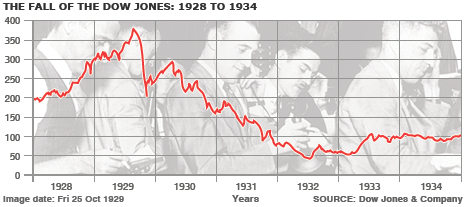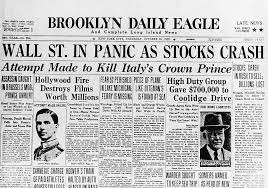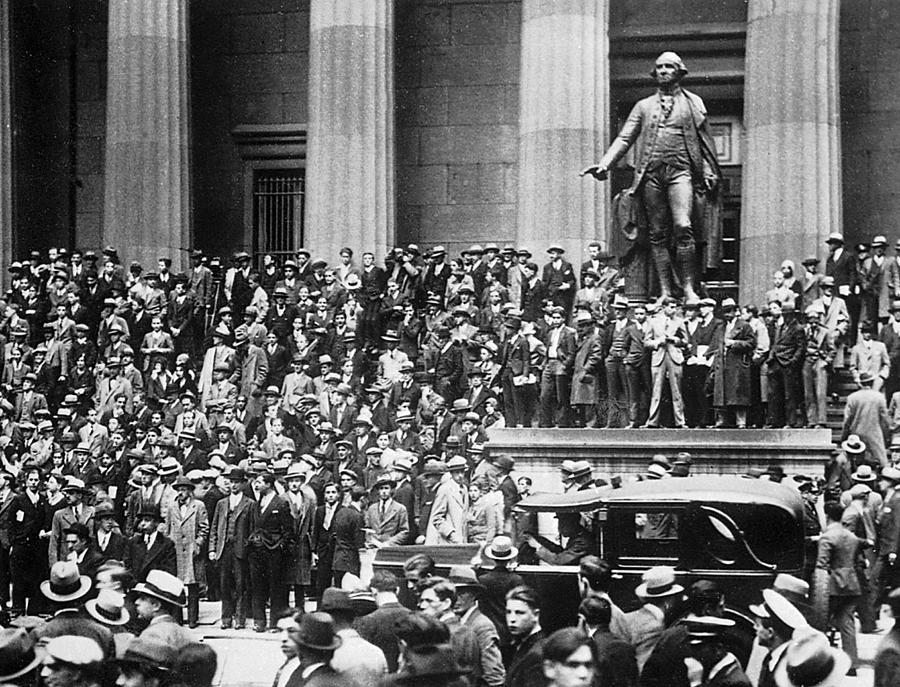
Dow Jones Industrial Average, Dow Jones and Company, 25 October 1929

To many, buying stocks on the margin was a way to make easy and fast money, but if your stock went down in value, the broker would demand the loan to be paid in cash to recover the loss. According to economist John Galbraith, "those who had bought stocks on the margin not only lost the value of their investment, they also owed money to the financial entities that had granted the loans for the stock purchase."[1] Investors who had traded on margin were forced to sell stocks to pay back their loans. When so many people were trying to sell stocks at the same time with very few buyers, it caused the prices to fall even more, contributing to the instability of the economy and leading to Black Tuesday, one of the worst days of the Great Crash of 1929.

Dow Jones Industrial Average, Dow Jones and Company, 25 October 1929
"Just as the boom accelerated the rate of growth, so the crash enormously advanced the rate of discovery. Within a few days, something close to a universal trust turned into something akin to universal suspicion. Audits were ordered. Strained or preoccupied behavior was noticed. Most important, the collapse in stock values made irredeemable the position of the employee who had embezzled to play the market.”
― John Kenneth Galbraith [2]

Associated Press. "Crowds Gathering Outside New York Stock Exchange." Wikimedia Commons, 24 October 1929
Black Tuesday, a catastrophic turning point in the economy of America, increased the amount of damage caused by the crash immensely. It occurred on October 29, 1929, when Wall Street investors traded some 16 million shares on the New York Stock Exchange in a single day. Billions of dollars were lost, wiping out thousands of investors. The stock market crashed, initiating a chain of events that led to a ten-year economic disaster that affected all industrialized countries in the world. This event ended the period of economic growth and prosperity in the United States and worsened the Great Crash of 1929 and the greatest economic downturn in the history of the Western industrialized world, the Great Depression.
The fragility of the stock market had finally been realized, but it was too late to go back. Businesses closed, factories shut down and banks failed. By 1933, the value of stock was less than one-fifth of what it had been at its peak in 1929.[3] The stock market crash crippled the economy because not only had individual investors put their money into stocks, so had businesses. When the stock market crashed, businesses lost their money to continue operating. Consumers also lost their money because many banks had invested their money without their permission or knowledge, so their assets could not be recovered.
Header Image: The Brooklyn Daily Eagle Front Page from October 24th, 1929: Stocks Crash - Great Depression
[1] Galbraith, John, The Great Crash Of 1929, 1962
[2] Galbraith, John, The Great Crash Of 1929, 1962, pages 98-99
[3] Social Welfare History Project, Stock Market Crash of 1929, 2020